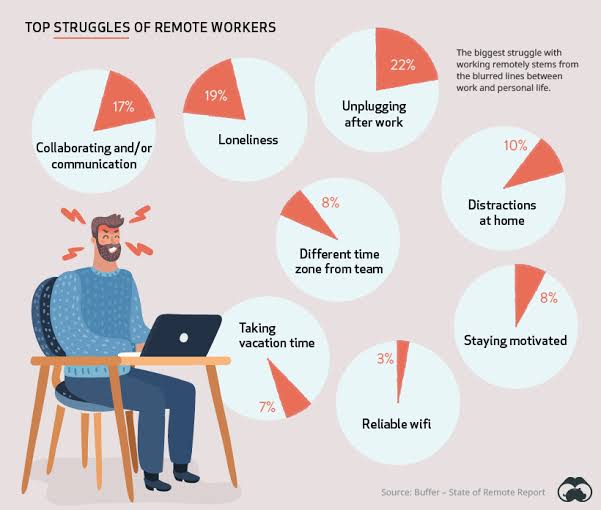Remote Work Best Practices: Maximizing Productivity and Collaboration in a Virtual Workspace
The rise of remote work has transformed the modern business landscape, offering flexibility and new opportunities for both employers and employees. However, managing remote teams presents unique challenges that require effective strategies to maintain productivity and collaboration. Here are some best practices to help businesses optimize their remote work setups and ensure success in a virtual workspace.
Clear Communication Channels
Effective communication is crucial in a remote work environment. Establishing clear and consistent communication channels helps prevent misunderstandings and keeps everyone aligned. Utilize tools like Slack, Microsoft Teams, or Zoom to facilitate daily interactions, team meetings, and project updates. Regular check-ins, whether through video calls or messaging platforms, ensure that team members remain engaged and informed.

“Unlock the secrets to successful remote work: Discover how to enhance productivity and teamwork from anywhere.”
Set Clear Expectations
Defining clear expectations for remote employees is essential for maintaining productivity. Set specific goals, deadlines, and performance metrics to provide employees with a clear understanding of their responsibilities. Regularly review and adjust these expectations as needed to accommodate changing circumstances and ensure that everyone remains on track.
Leverage Project Management Tools
Project management tools like Asana, Trello, or Monday.com can significantly enhance productivity in a remote work environment. These platforms help teams track progress, assign tasks, and collaborate on projects in real time. By centralizing project information and updates, team members can easily stay informed and contribute effectively, regardless of their location.
Foster Team Collaboration
Building a cohesive team in a virtual workspace requires intentional effort. Encourage team members to participate in virtual brainstorming sessions, collaborative projects, and social interactions. Regular team-building activities, even if conducted online, can help strengthen relationships and foster a sense of community among remote employees.

“Maximize your remote work efficiency with these top tips for productivity and team collaboration.”
Provide Necessary Resources
Ensuring that remote employees have access to the right tools and resources is critical for maintaining productivity. Provide employees with the necessary hardware, software, and technical support to perform their jobs effectively. This may include investing in reliable internet connections, ergonomic office furniture, and cybersecurity measures to protect company data.
Promote Work-Life Balance
Maintaining a healthy work-life balance is essential for remote employees’ well-being and productivity. Encourage employees to establish clear boundaries between work and personal time, and support flexible work schedules when possible. Recognize the importance of taking breaks and time off to prevent burnout and ensure long-term productivity.
Offer Training and Development
Investing in training and development helps remote employees stay current with industry trends and improve their skills. Provide access to online courses, webinars, and professional development opportunities to support continuous learning. By fostering a culture of growth and development, you can enhance employee satisfaction and performance.
Monitor and Evaluate Performance
Regularly monitoring and evaluating remote employees’ performance is important for ensuring that productivity levels remain high. Use performance metrics, feedback sessions, and self-assessments to track progress and address any challenges. Providing constructive feedback and recognizing achievements can help motivate employees and drive continuous improvement.
Encourage Open Feedback
Create an environment where remote employees feel comfortable sharing their feedback and concerns. Encourage open communication about what is working well and what could be improved in the remote work setup. Addressing issues promptly and making necessary adjustments can help enhance the overall remote work experience.
In conclusion, implementing best practices for remote work can significantly improve productivity and collaboration in a virtual workspace. By establishing clear communication channels, setting expectations, leveraging project management tools, and supporting employees’ well-being, businesses can effectively navigate the challenges of remote work and achieve success in the evolving landscape of modern employment.